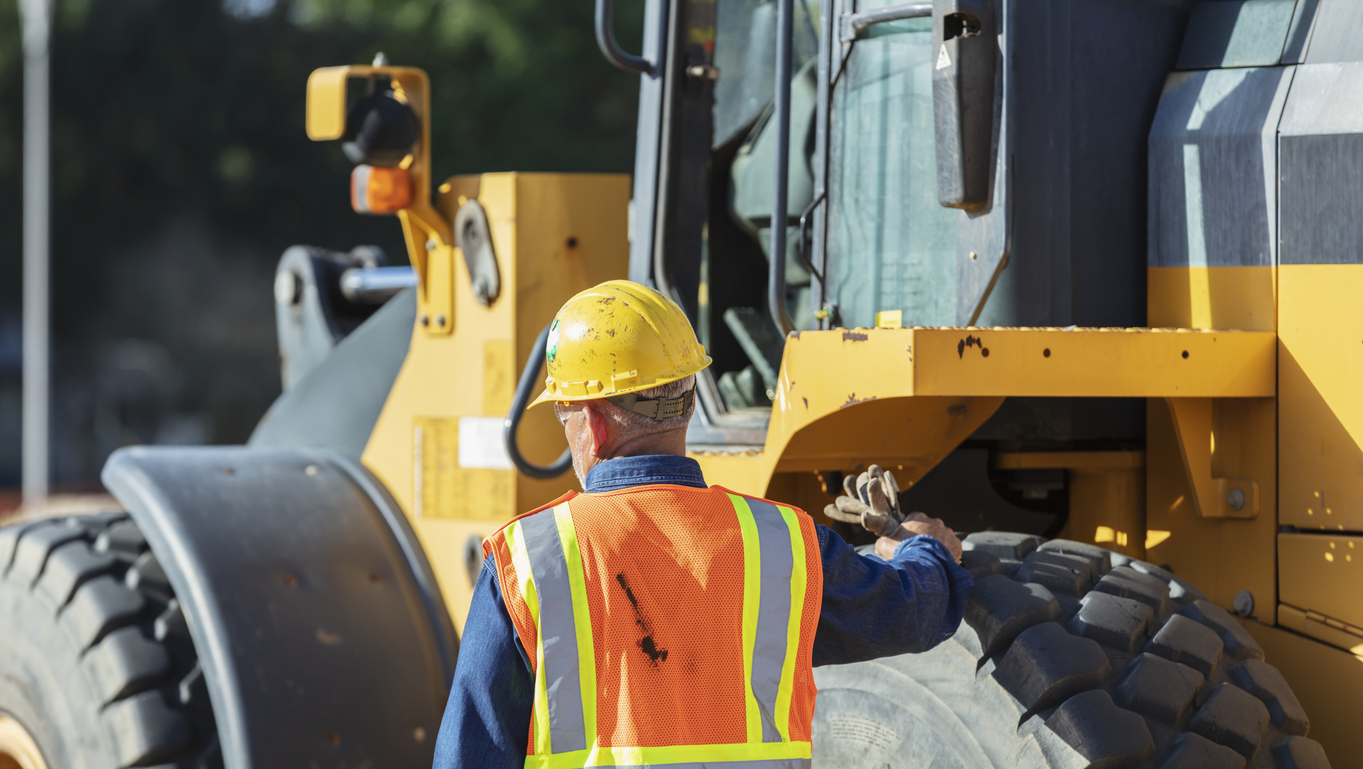Transporting contractor equipment is challenging year-round, but winter introduces a new layer of risk that can dramatically increase the likelihood of loss. Snow, ice, freezing temperatures, poor visibility, and seasonal spikes in theft make winter the most dangerous time of year for moving equipment between job sites.
For contractors who rely on excavators, loaders, skid steers, trenchers, generators, and other mobile equipment, protecting assets in transit is essential. The following includes several winter-specific strategies you can share with your contractor clients to reduce loss, avoid downtime, and keep projects moving safely.
Preventing Freeze Damage to Hydraulics, Engines, and Electrical Systems
Cold temperatures can be brutal on construction equipment. Frozen fluids, cracked hoses, dead batteries, and compromised hydraulics are among the most common and costly winter losses.
To prevent free damage, contractors should use winter-grade hydraulic fluids and anti-gel fuel additives, warm up engines and hydraulic systems before loading, insulate exposed hoses and cylinders for long transports, and avoid moving equipment with frozen attachments or stuck tracks.
Strengthening Securement on Ice-Covered Trailers
Ice and snow create slippery trailer decks, reduce friction, and make even properly secured equipment more likely to shift. This can increase the chance of tip-overs and tie-down failures if the driver has to brake suddenly or skids on an icy road. To reduce risk, remove snow and ice completely from trailer beds, add additional chains or binders beyond FMCSA minimums, confirm weight is properly balanced before transport, and use tire or track blocks when loading on angled surfaces.
Minimizing Salt and De-Icer Corrosion Damage
Winter road treatments accelerate corrosion on undercarriages, welds, electrical lines, and hydraulic components. Best practices include applying anti-corrosion sprays before long transit, tarping sensitive components such as control panels, washing equipment immediately after arrival or staging, and inspecting undercarriages for early signs of rust or pitting.
Combating Seasonal Theft & Vandalism
Annual losses from construction and heavy equipment theft range from $300 million to $1 billion. The impact is even higher when you consider indirect costs such as project delays, idle labor, and rental premiums.
Moreover, in the winter, theft and vandalism of contractor equipment rise sharply due to extended holiday shutdowns, short daylight hours, and equipment that’s left staged at jobsites or in parking lots.
To safeguard equipment, install GPS tracking with geofencing alerts; store trailers and equipment in well-lit, secure areas; remove keys and disconnect batteries to deter hot-wiring; and lock hitches, wheels, and control panels.
Also, walk through every area of the site to check that fences, gates, and signage are where they need to be. Check for gaps, weak points, and damage to fences and gates, and ensure security signage is visible around the site’s perimeter. Check CCTV cameras regularly to ensure they’re operational. Verify that all site lights work and replace any bulbs as needed. Check that timers and motion sensors are set and working correctly.
Protecting Battery and Electrical Systems From Deep Cold
Extreme cold drains batteries and stresses electrical components. Contractors should take the following precautions:
- Load-test all batteries before seasonal transport
- Use block heaters for overnight hauls
- Shield exposed wiring from moisture intrusion
- Keep backup batteries and jump packs available
Adjusting Route Planning for Winter Weather Patterns
Most winter accidents involving equipment in transit are caused not by mechanical failure, but by rushed decisions in deteriorating conditions. Plan ahead before hitting the road, including avoiding mountain passes during storms, monitoring DOT winter condition maps for closures, allowing extra time to avoid rushed driving, choosing routes with truck stops capable of handling oversized loads, and having alternative route plans in mind in the event of sudden weather changes.
For additional risk-mitigation measures, please visit here.
About Seneca Insurance Companies
Seneca Insurance Companies provides both admitted and non-admitted Inland Marine coverages to insure contractors’ equipment. We offer floaters for contractor’s tools and equipment that move from site to site to protect vital high-cost items susceptible to damage, vandalism, theft, and equipment breakdown.
